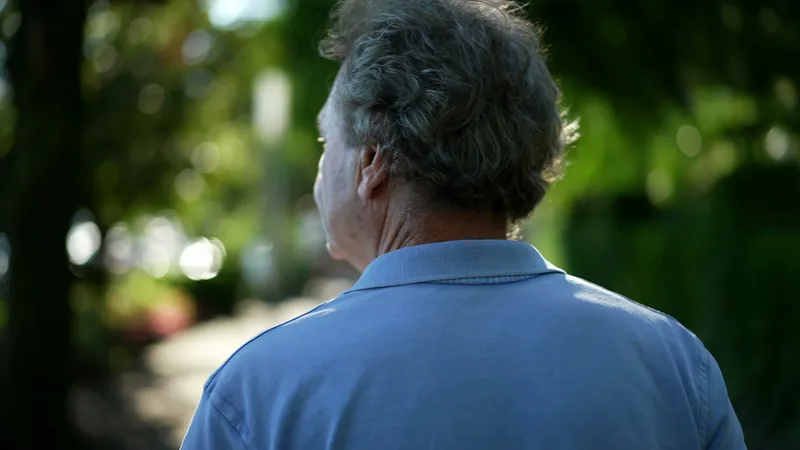
No More Excuses: Baby Boomer Investor Challenges Millennials on Property Buying Struggles
2025-01-18
Author: Wei
Introduction
In a candid revelation, a 75-year-old man from Sydney, Australia, has stirred up the conversation around the challenges faced by today’s youth trying to enter the property market. Despite his considerable wealth of AU$2 million (S$1.7 million), he insists that the answers to financial struggles lie in lifestyle choices rather than just the pressures of a daunting economy.
Old versus New Spending Habits
In a recent interview, the former property investor shared insights that many young Australians might find hard to swallow. He pointed out that today’s millennials often prioritize brand-name products and expensive coffee over saving for the future. “You’re wearing brand t-shirts and brand shoes—we never did that," he remarked, emphasizing how lifestyle inflation can significantly affect saving capacity.
According to him, even small daily habits can lead to substantial savings. For instance, he noted that in his day, people often brewed their coffee at home rather than spending AU$4 to AU$7 (S$3.40 to S$5.94) at cafés. "The absence of streaming services and overpriced mobile phones made it more feasible to save money back then," he lamented.
A Wealth of Experience
He provided further context by explaining how he successfully built a property portfolio. Starting with a modest two-bedroom apartment 25 years ago, he leveraged increasing property values to acquire a total of ten homes, which he eventually sold. His philosophy of budgeting and economizing has evidently paid off, as he has never had to financially assist his children in their own property endeavors. "They learned how to budget and became independent," he stated proudly.
The Changing Financial Landscape
However, the current financial landscape paints a quite different picture. The cost of entering the property market has skyrocketed, with average home loan sizes now reaching AU$802,357 (S$681,073) by 2023 compared to just AU$42,277 (S$35,886) in 1984. It’s clear that the financial hurdles are monumental today, with the average deposit now pegged at AU$200,000 (S$169,768)—a challenging sum for many younger Australians to save from their regular incomes.
Criticism and Counterarguments
Critics have taken to social media to challenge his dismissive remarks about a so-called "cost-of-living crisis." Some have shared their struggles to make ends meet despite cutting back on non-essentials, arguing that lifestyle adjustments are insufficient given the rising cost of housing and living expenses. One user pointed out they don’t drink coffee or wear expensive clothing yet still find it impossible to save.
Meanwhile, mortgage broker Jess Phillips acknowledged the reality of financial strain for many. While she noted some clients indulge in AU$500 takeaway dinners or AU$200 TV subscriptions, she stated that other households genuinely face hardship. "People are definitely dipping into their savings more frequently," she observed, highlighting a disconnect between spending habits and the portrayed sense of crisis.
Conclusion
In conclusion, the advice from this baby boomer, while reflective of his personal successes, raises deeper questions about the gap between generations and the growing financial pressures that young people face today. As housing prices continue to soar and costs of living rise, the conversation around property access is bound to evolve. Is it really a matter of changing your lifestyle, or is a larger systemic change needed to ensure housing is accessible for future generations?
In a world where financial independence seems increasingly elusive, perhaps it’s time for a dialogue that moves beyond cutbacks to address the real barriers at play.


 Brasil (PT)
Brasil (PT)
 Canada (EN)
Canada (EN)
 Chile (ES)
Chile (ES)
 Česko (CS)
Česko (CS)
 대한민국 (KO)
대한민국 (KO)
 España (ES)
España (ES)
 France (FR)
France (FR)
 Hong Kong (EN)
Hong Kong (EN)
 Italia (IT)
Italia (IT)
 日本 (JA)
日本 (JA)
 Magyarország (HU)
Magyarország (HU)
 Norge (NO)
Norge (NO)
 Polska (PL)
Polska (PL)
 Schweiz (DE)
Schweiz (DE)
 Singapore (EN)
Singapore (EN)
 Sverige (SV)
Sverige (SV)
 Suomi (FI)
Suomi (FI)
 Türkiye (TR)
Türkiye (TR)
 الإمارات العربية المتحدة (AR)
الإمارات العربية المتحدة (AR)